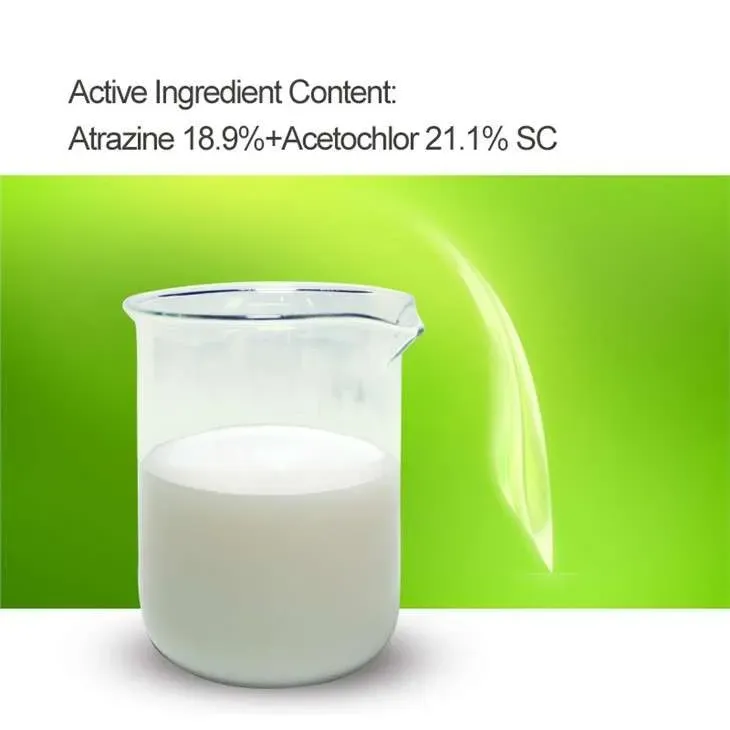


Current Market Trends for Atrazine Herbicides
Atrazine herbicide remains one of the most widely used weed control solutions in the agricultural sector. Farmers rely on liquid atrazine, atrazine 4L herbicide, Und atrazine 50 WP to effectively manage broadleaf and grassy weeds in crops such as corn, sorghum, and sugarcane. As the global demand for high-yield farming increases, the market for atrazine chemical is experiencing notable shifts. This article explores the latest trends influencing the atrazine herbicide market and its future outlook.

Growing Demand for Liquid Atrazine in Large-Scale Farming
The agricultural industry is witnessing a significant rise in the use of liquid atrazine due to its convenience and effectiveness. Atrazine 4L herbicide is particularly favored by large-scale farmers for its ease of application and rapid absorption into the soil. Unlike granular formulations, liquid atrazine offers superior coverage, ensuring even weed control across extensive farmland.
With increasing concerns over herbicide resistance, many farmers are incorporating liquid atrazine into their integrated weed management strategies. It enhances the efficiency of other herbicides, reducing the likelihood of resistant weed populations. As a result, the demand for atrazine 4L herbicide is expected to continue rising, particularly in regions where large-scale crop production is dominant.
Atrazine 50 WP Remains a Cost-Effective Solution for Weed Control
Während liquid atrazine dominates large-scale applications, atrazine 50 WP remains a cost-effective option for many farmers. As a wettable powder formulation, atrazine 50 WP is easy to transport and has a longer shelf life compared to liquid alternatives. Small and medium-scale farmers appreciate its affordability and effectiveness in controlling a wide range of weeds.
Another advantage of atrazine 50 WP is its flexibility in application. It can be mixed with other herbicides to enhance performance, making it an essential tool for weed management programs. With cost efficiency being a major consideration for farmers worldwide, the demand for atrazine 50 WP remains strong in both emerging and established agricultural markets.
Regulatory Developments Impacting Atrazine Chemical Sales
Der atrazine chemical market is heavily influenced by regulatory policies across different regions. Some countries have imposed restrictions on atrazine herbicide usage due to environmental concerns, while others continue to support its use under strict guidelines. These regulations directly impact global trade and availability, making compliance a key factor for suppliers and distributors.
Despite regulatory challenges, atrazine chemical continues to be a preferred herbicide due to its cost-effectiveness and proven efficiency. Many agricultural researchers are working on improved application methods to minimize environmental impact while maintaining its effectiveness. As regulatory frameworks evolve, the market is adapting with innovative formulations and application techniques to meet compliance requirements.
Future Outlook for Atrazine 4L Herbicide in Global Agriculture
The future of atrazine 4L herbicide in global agriculture looks promising, driven by the increasing need for high crop yields and efficient weed control. With precision farming gaining momentum, the role of liquid atrazine in sustainable weed management is becoming more significant. Farmers are investing in advanced spraying technologies to maximize the efficiency of atrazine herbicide, reducing waste and environmental impact.
In addition, rising food demand is fueling the expansion of commercial farming, particularly in developing countries. This growth translates to a steady demand for effective herbicides like atrazine 4L herbicide. While regulatory challenges persist, the market is expected to adapt through innovations in formulation and responsible application methods.
For those in need of high-quality atrazine herbicide, we offer reliable solutions to meet your agricultural needs. Visit our website to explore our range of atrazine chemical products and enhance your weed control strategy.
Atrazine Herbicide FAQs
What is the difference between liquid atrazine and atrazine 50 WP?
Liquid atrazine is a ready-to-use formulation that provides quick absorption and easy application, while atrazine 50 WP is a wettable powder that must be mixed with water before spraying. Both are effective but suit different farming needs.
How long does atrazine 4L herbicide remain active in the soil?
Atrazine 4L herbicide can remain active in the soil for several weeks to months, depending on soil type, climate, and application rate. It provides long-lasting weed control but should be used responsibly to prevent buildup.
Is atrazine chemical safe for all crops?
No, atrazine chemical is primarily used for crops like corn, sorghum, and sugarcane. It may be harmful to non-target plants, so always check label instructions before application.
Can atrazine herbicide be mixed with other herbicides?
Ja, atrazine herbicide is often combined with other herbicides to improve effectiveness and prevent weed resistance. However, compatibility should be tested before large-scale application.
Where can I buy high-quality atrazine herbicide?
You can purchase premium atrazine herbicide from our website. We offer reliable liquid atrazine, atrazine 4L herbicide, Und atrazine 50 WP to meet your agricultural needs.
-
Uncover the Benefits of Sodium ChlorateNachrichtJun.24,2025
-
Sodium for Sale: Your Essential ResourceNachrichtJun.24,2025
-
Raw Materials in Chemical IndustryNachrichtJun.24,2025
-
Potassium Hydroxide: Versatile Solutions for Your NeedsNachrichtJun.24,2025
-
Organic Pesticides and Chemical Raw Materials: Building a Sustainable FutureNachrichtJun.24,2025
-
Discover Premium Chlorine Tablets TodayNachrichtJun.24,2025
-
Zinc for Sale: Your Essential ResourceNachrichtJun.04,2025


















